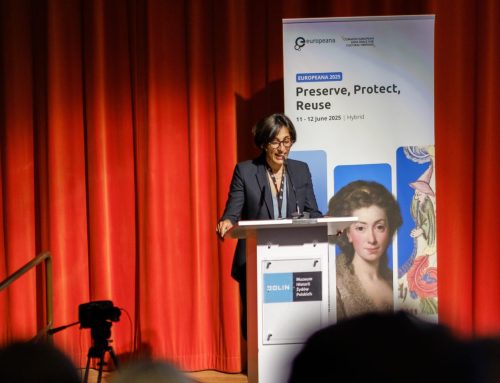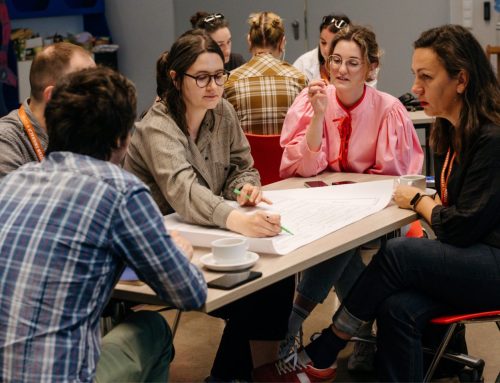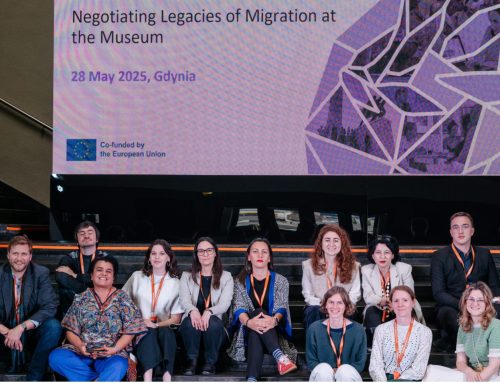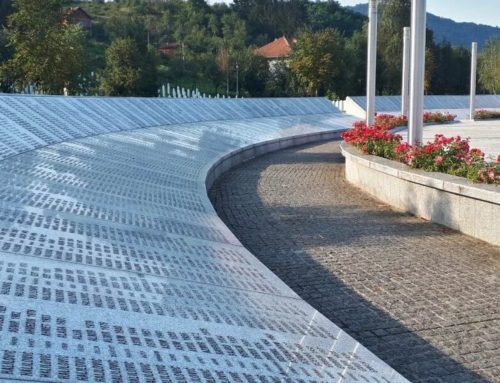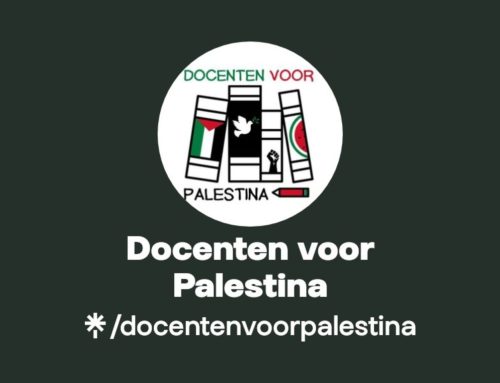Student populations are no longer homogenous in our globalized classrooms, therefore there is an increased likelihood of spontaneous disagreements in the classroom. In light of the project “Learning to Disagree”, EuroClio aims to support educators in discussing controversial topics by developing teaching materials and guidelines. This blog post focuses on preparatory work for educators before bringing controversial topics into the classroom. The emphasis is on the importance of awareness about the role of teachers’ beliefs and values, creating a classroom community, and explicit teaching of civic competences.
Why teaching to disagree?
The Council of Europe reaffirmed its worries about big topics as exclusion, discrimination and polarization in European societies during their conference in 2017. The teaching of civic competences is seen as a way to counteract those serious problems (Council of Europe Report 2017, 13). One of those competences is a willingness to accept other viewpoints as equally valid as one’s own (Stradling 2003, 14). The subject of history is characterised as the field in which students should acquire civic competences to develop a more democratic, inclusive, and harmonious society (Navarro and Howard 2017, 227). The question rises how history educators can cater for a classroom atmosphere that recognizes and appreciates multiple perspectives, especially regarding controversial topics? The first important factor to consider is the teachers’ beliefs and values.
Teacher Identity
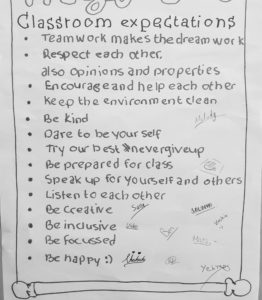
Example of a classroom contract
Teachers should be aware of their sense of purpose, which is determined by their beliefs, values, and experiences. Important decisions related to pedagogy and academics are affected by teachers’ understanding of their role as educators and their understanding of the purpose of their subject (Ho 2017, 326). Therefore, it would be advisable for teachers to reflect on their teaching philosophy and consider how this is influenced by factors such as race, gender, and social class. This is called a sociocultural consciousness in North-American literature related to multicultural education (Villegas and Lucas 2002, 21). Teachers with a sociocultural consciousness also realize that there is not something like “neutral” or “a-political” (Villegas and Lucas 2002, 23).
Like the US, European societies are characterized by social stratification due to factors such as gender, race, ethnicity, social states, ability and sexual orientation. Teachers should reflect on this reality before discussing sensitive topics, like ethnic diversity, dealing with the totalitarian past, racism, or colonialism, with students in order to distinguish informed opinions from opinionated information. This reflection can be stimulated by readings that engage teachers with different ideological perspectives or structured reflective writings based onwriting prompts (Sleeter and Flores Carmona 2017, 39). Before discussing sensitive matters, it is desired that teachers reflect on their sociocultural consciousness and realize that their sense of purpose determines their approach in teaching sensitive issues (Ho 2017, 326).
Classroom Community
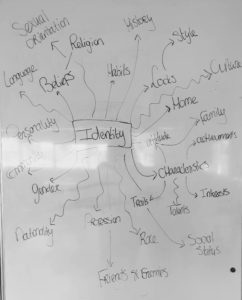
Example of a brainstorm about the concept Identity
Another important step is the creation of a safe space, in order to allow students to express their thinking while examining the topic (Ho 2017, 330). A safe space, however, is not the same as a comfortable one. A classroom can be a dignity safe classroom, while being intellectually unsafe by challenging students’ opinion (Flensner and Von der Lippe 2019, 278). Therefore, there should be something like ‘classroom civility’; expectations regarding values and basic norms to treat others with dignity (Flensner and Von der Lippe 2019, 279). To establish such dignity safe classroom, the examination of the concept of identity is a starting point. This allows for an understanding of the existence of multiple perspectives, due to unique identities that experience and view the world differently.
These are a few suggested activities that help to explore the concept of identity with students. An exercise about names and the meaning behind names set students on a path to explore their cultural background (Christensen 2017, 9). Another way is working with an identity chart, which helps students to think about the factors that make up their identity. The Ted Talk by Chimamanda Ngozi Adichie appropriately titled” The Danger of a Single Story” is another way that allows a conversation to take place talk about identities and stereotypes (Christensen 2017, 71).
Eventually, it would be encouraged to create some kind of classroom contract. This can be done by an initial brainstorm on treating others with dignity, which can be translated into expectations or norms. For lower levels, the home advantage for sports team is a suitable idea to use for designing classroom expectations (Daniels and Ahmed 2015, 94). The document/chart created after such a session should have a prominent place in the classroom, so it can be consulted regularly, especially when engaging in activities that allow for multiperspectivity. Needless to say, these activities require a positive relationship between teacher and student, which is essential throughout the year.
Explicit Teaching of Civic Competences
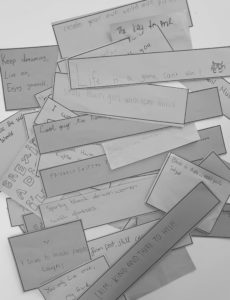
Six-words memoirs created by students based on their identity chart
There are different methods that a teacher can use to employ multiperspectivity while teaching a sensitive topic. Discussion-based approaches are effective in developing civic skills, like developing an informed opinion, discussing with others, and respecting opposite viewpoints (Ho 2017, 328). However, this should go along with explicit teaching of discussion, self-reflection, and inquiry skills (Kello 2016, 37). It is important to distinguish a discussion from a debate, as the latter has the opposite effect (Ho 2017, 329). Thus, a teacher can utilize several teaching methods to conduct a discussion, e.g: world cafe, socratic seminar, or fishbowl. Suggestion
s for teaching methods focused on debate, dialogue or discussion and practical examples can be found in the Teacher’s Guide produced in the framework of the Learning to Disagree project, that will be publicly available early 2020.There should be explicit teaching of necessary skills when conducting such discussions. A teacher could refer to the classroom contract and establish together with the students some behavioural expectations for the discussion. The focus can be on active listening or respectfully disagreeing. Students can first think for themselves what this means and how one can show this, whereafter their suggestions can be compiled on the board. After the activity, students reflect on their behaviours and set goals for themselves for the next time.
Conclusion
There is some preparatory work required before teachers can utilize content that addresses multiperspectivity in controversial issues. It is important that teachers first become aware of their own biases, which affect their pedagogical strategies. Secondly, students should have a feeling of civility safety in the classroom before engaging in a discussion about something sensitive. This can be done by focusing on the existence of different identities and thus different world views. In order to ensure everyone’s dignity, certain expectations can be written down on a classroom contract. Finally, there is a need to explicitly teach civic competences when it concerns a sensitive topic. The described steps allow educators to anticipate different viewpoints in our hyper-diverse classrooms nowadays.
This blogpost is written by Maayke de Vries (History teacher at International School Almere and Prospective PhD Student at the University College London), who joined the project meeting of the Learning to Disagree project in Utrecht in August 2019. In the project we are developing educational materials that you can implement in your classroom dealing with controversial and sensitive issues such as migration, living under totalitarian regimes and dealing with the history of this, and disputed cultural heritage. We also provide teachers guides on how you can use the techniques of debate, dialogue and discussion in the classroom with concrete examples, and on how to assess social and civic competences in that process. This blogpost was written as a supplemental resource looking at preparations before you can apply these resources in your classroom practice.
More from Maayke on www.mizsdafreeze.com
Sources:
Christenesen, Linda. 2017. Reading, Writing, and Rising up. Teaching about Social Justice and the Power of the Written Word. Milwaukee, WI: Rethinking Schools, Ltd.
Daniels, Harvey “Smokey” and Sara K. Ahmed. 2015. Upstanders. How to Engage Middle School Hearts and Minds with Inquiry. Portsmouth, NH: Heinemann.
Flensner, Karin K. and Marie Von der Lippe. 2019. “‘Being safe from what and safe for whom? A critical discussion of the conceptual metaphor of ‘safe space’.” Intercultural Education 30 (3):275-288. DOI: 10.1080/14675986.2019.1540102
Ho, Li‐Ching, Paula McAvoy, Diana Hess, and Brian Gibbs. 2017. “Teaching and Learning
about Controversial Issues and Topics in the Social Studies: A Review of the Research.” In The Wiley Handbook of Social Studies Research, edited by Manfra, Meghan McGlinn, and Cheryl Mason Blick, 321-335. Chichester, UK: John Wiley & Sons Ltd.
Kello, Katrin. 2016. “Sensitive and Controversial Issues in the Classroom: Teaching History in a Divided Society.” Teachers and Teaching: Theory and Practice 22 (1): 35–53. https://doi.org/10.1080/13540602.2015.1023027.
Navarro, Oscar and Tyrone C. Howard. 2017. “A Critical Race Theory Analysis of Social
Studies Research, Theory and Practice.” In The Wiley Handbook of Social Studies Research, edited by Manfra, Meghan McGlinn, and Cheryl Mason Blick, 209-226. Chichester, UK: John Wiley & Sons Ltd.
Sleeter, Christine and Judith Flores Carmona. 2017. UnStandardizing Curriculum. Multicultural Teaching in Standardized Classrooms. 2nd ed. New York, NY: Teachers College Press.
Villegas, Ana Maria and Tamara Lucas. 2002. “Preparing Culturally Responsive Teachers:



